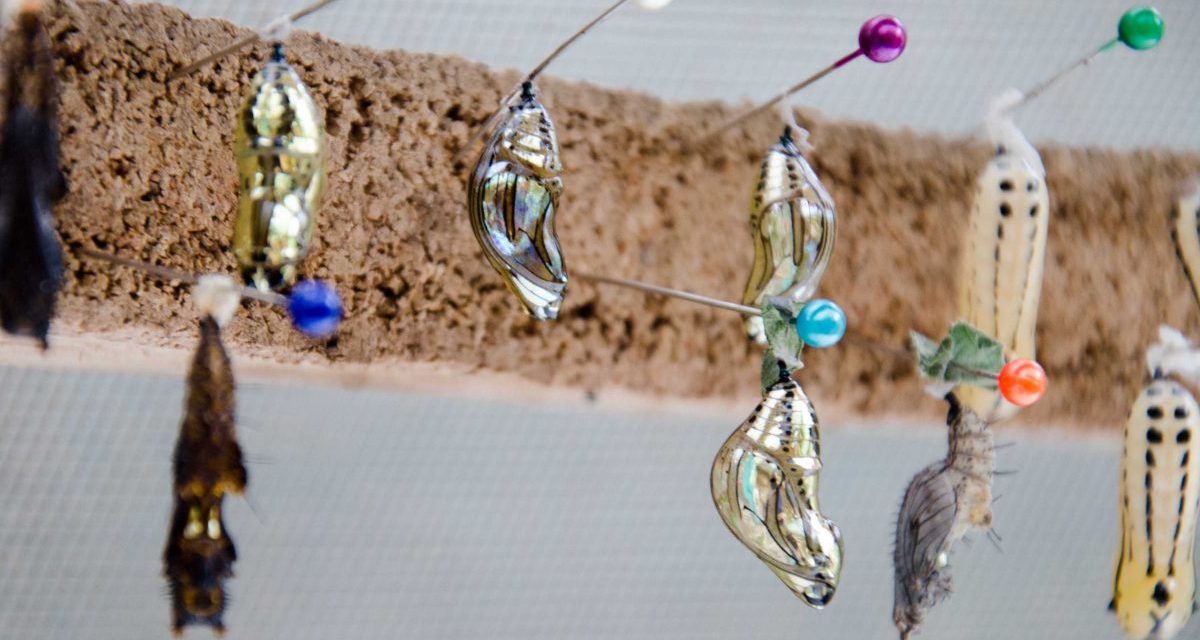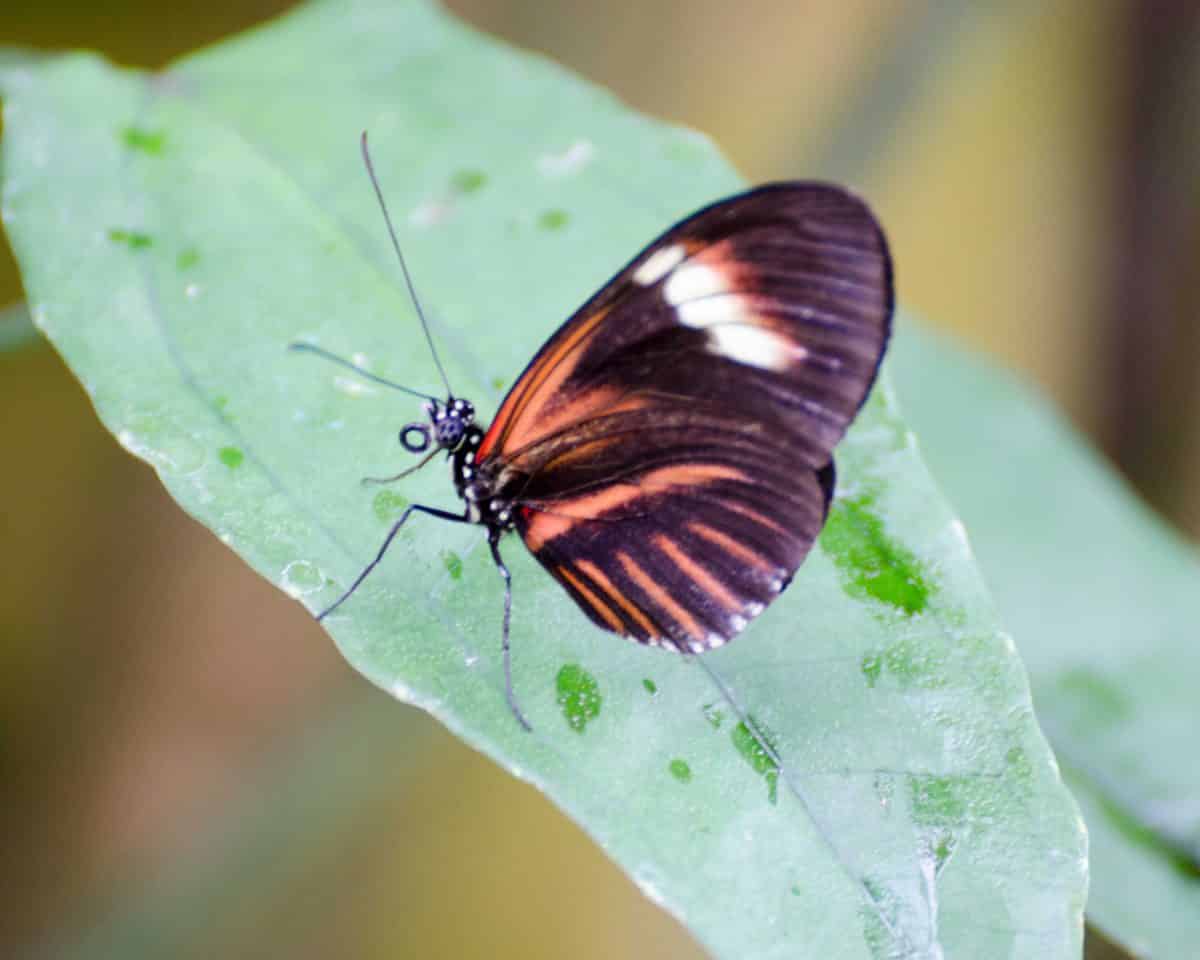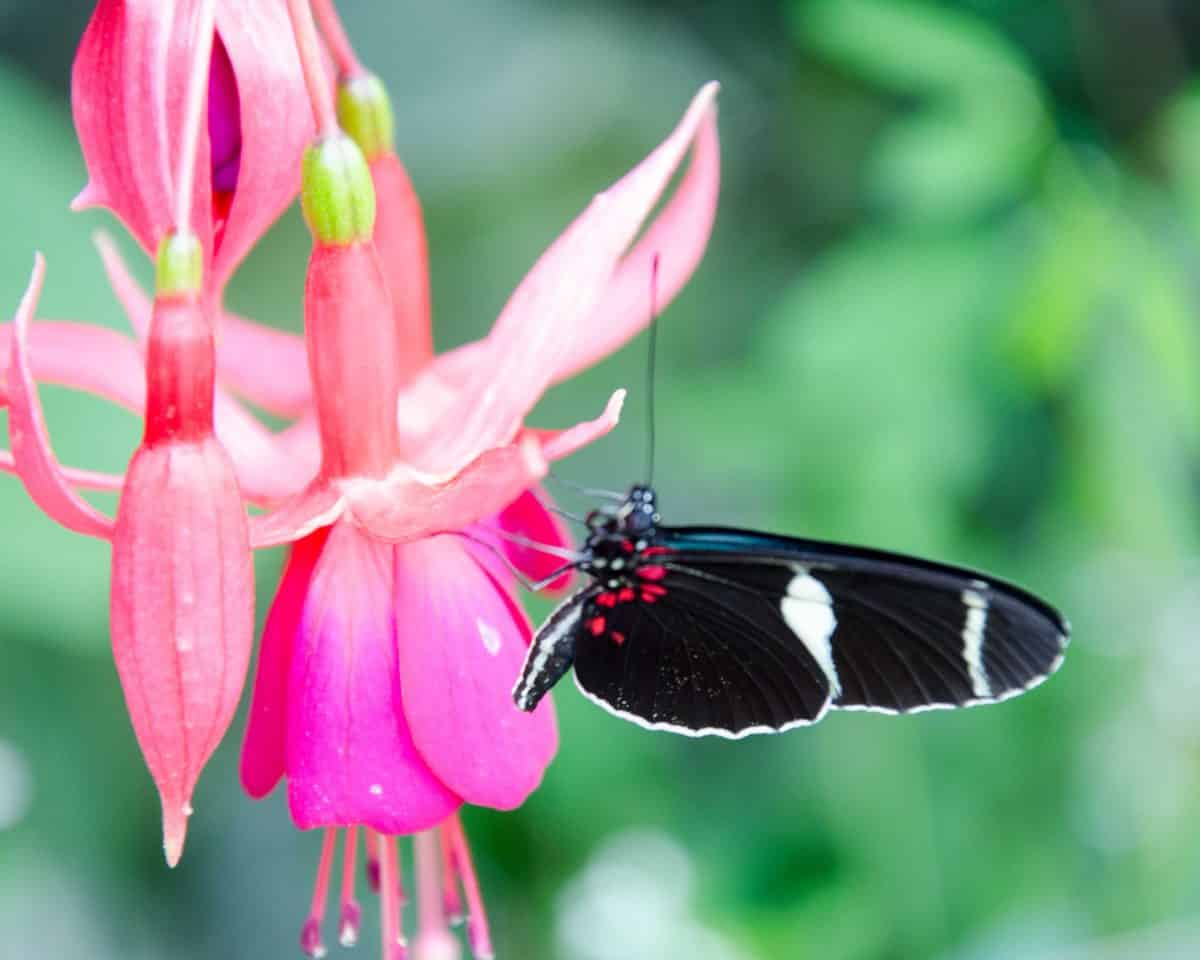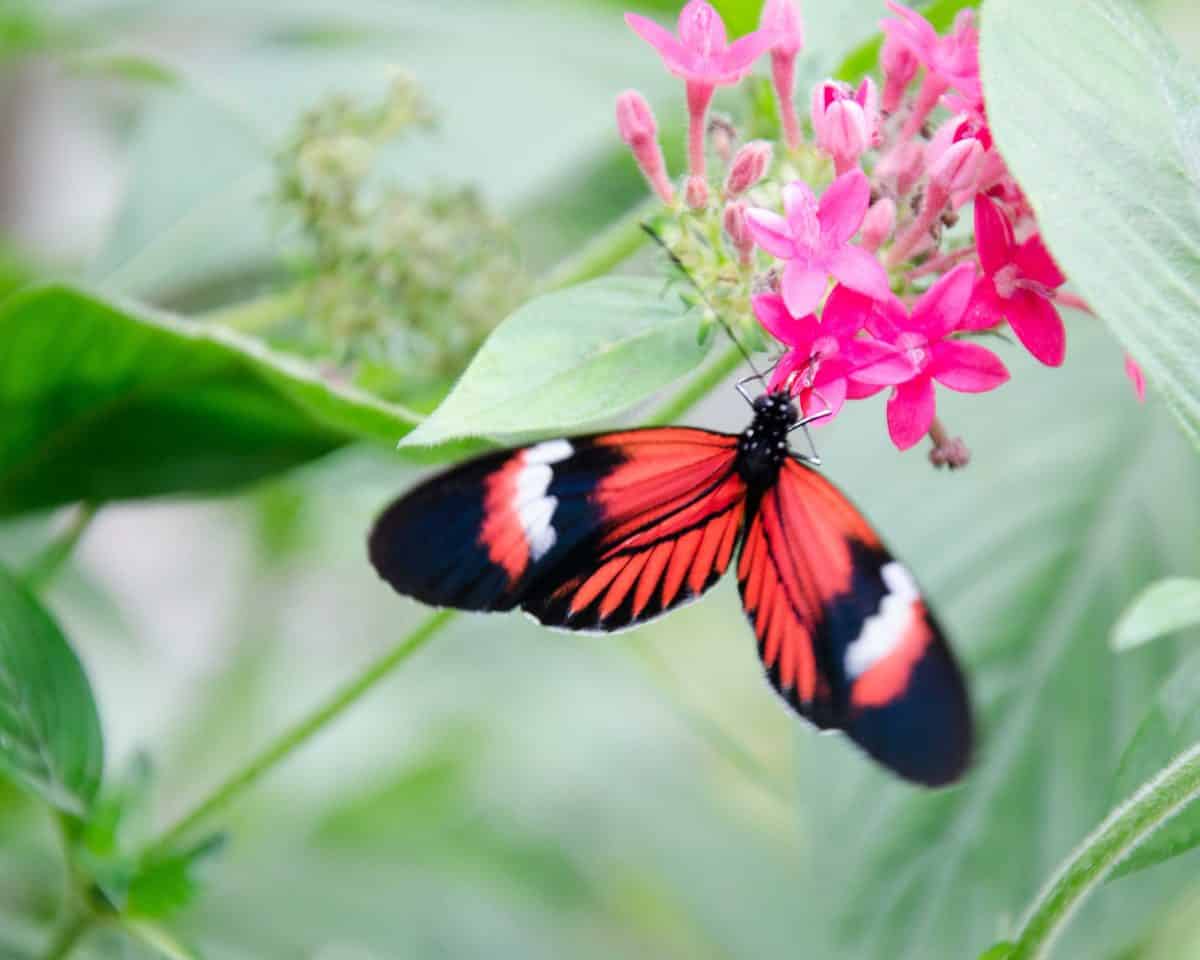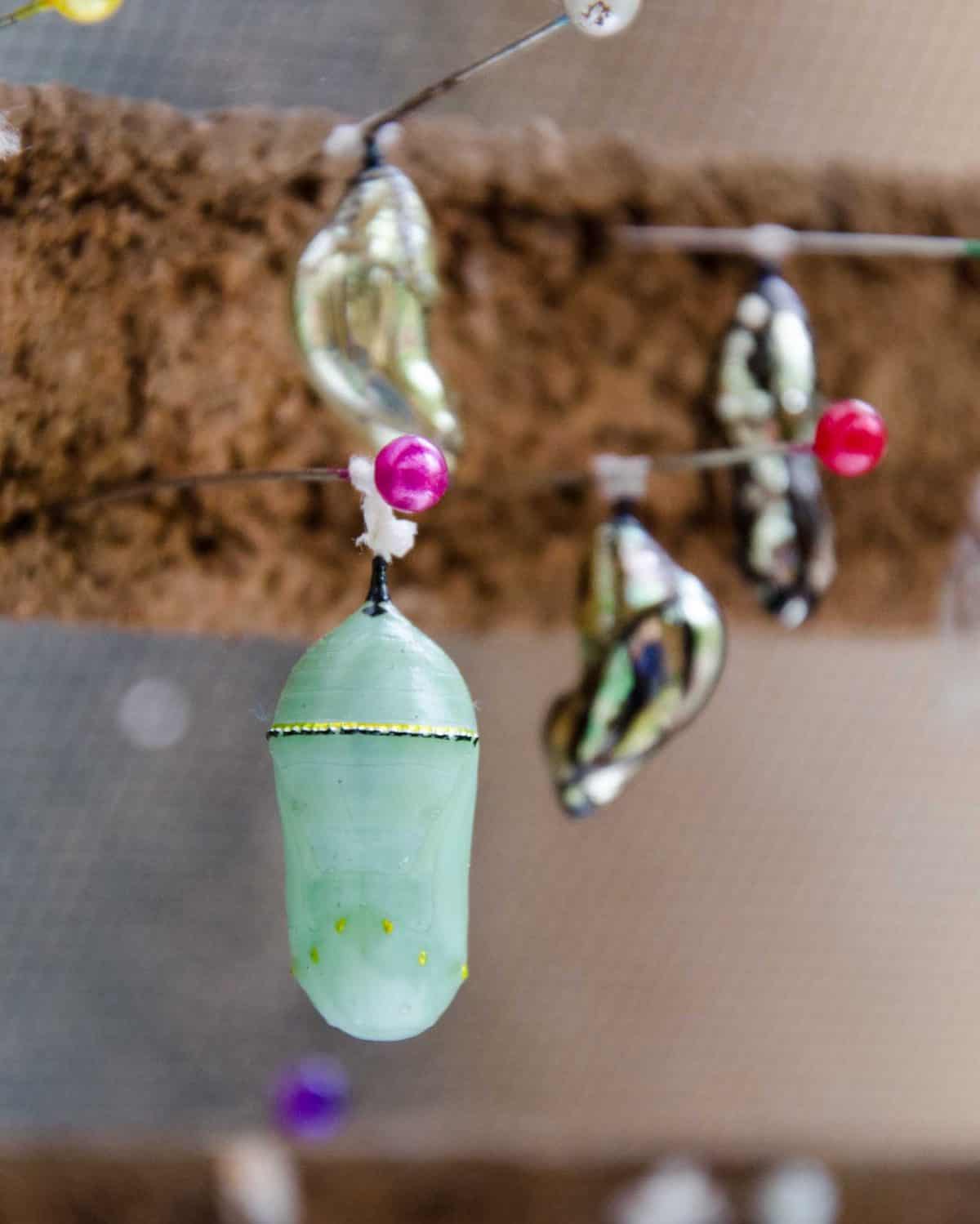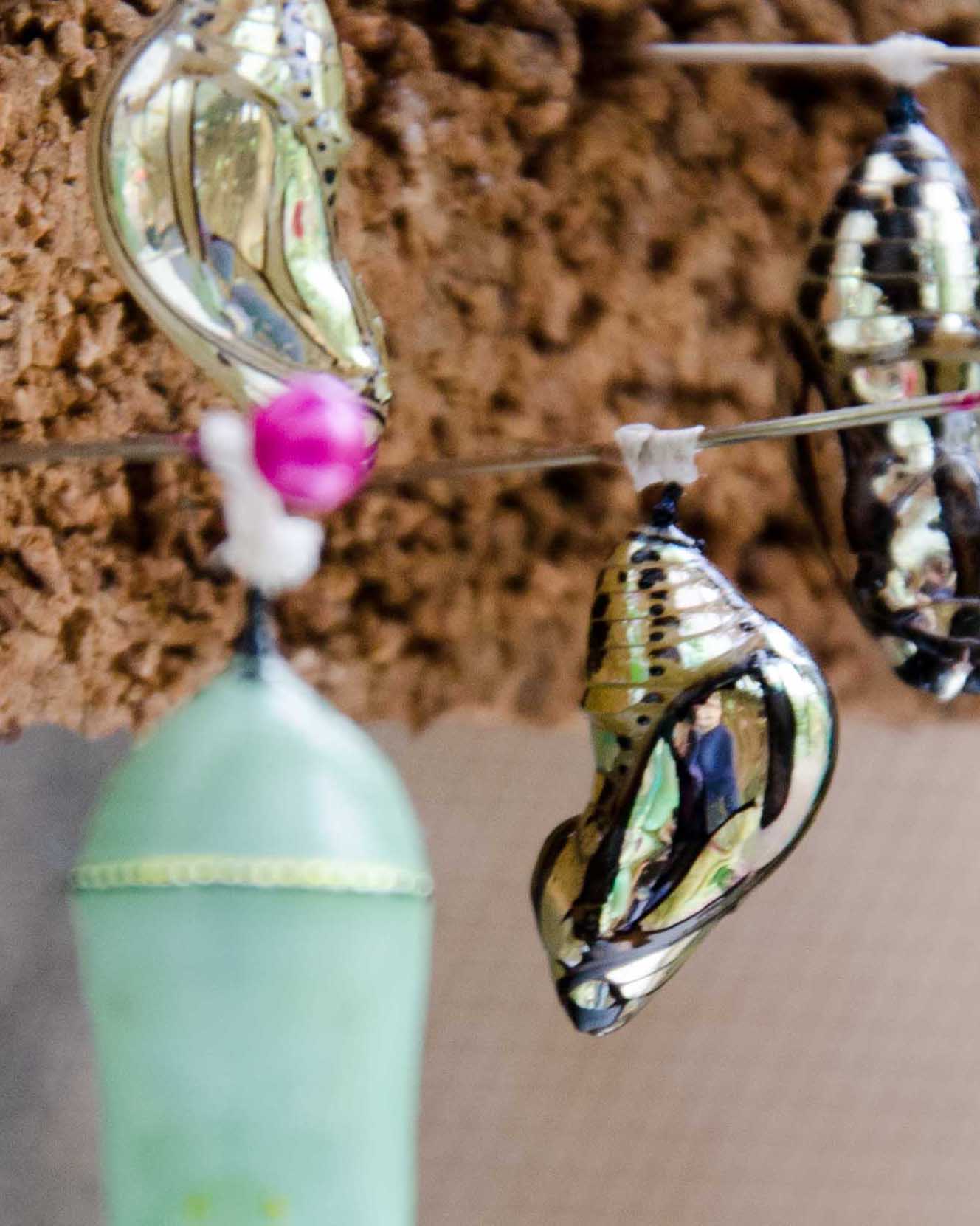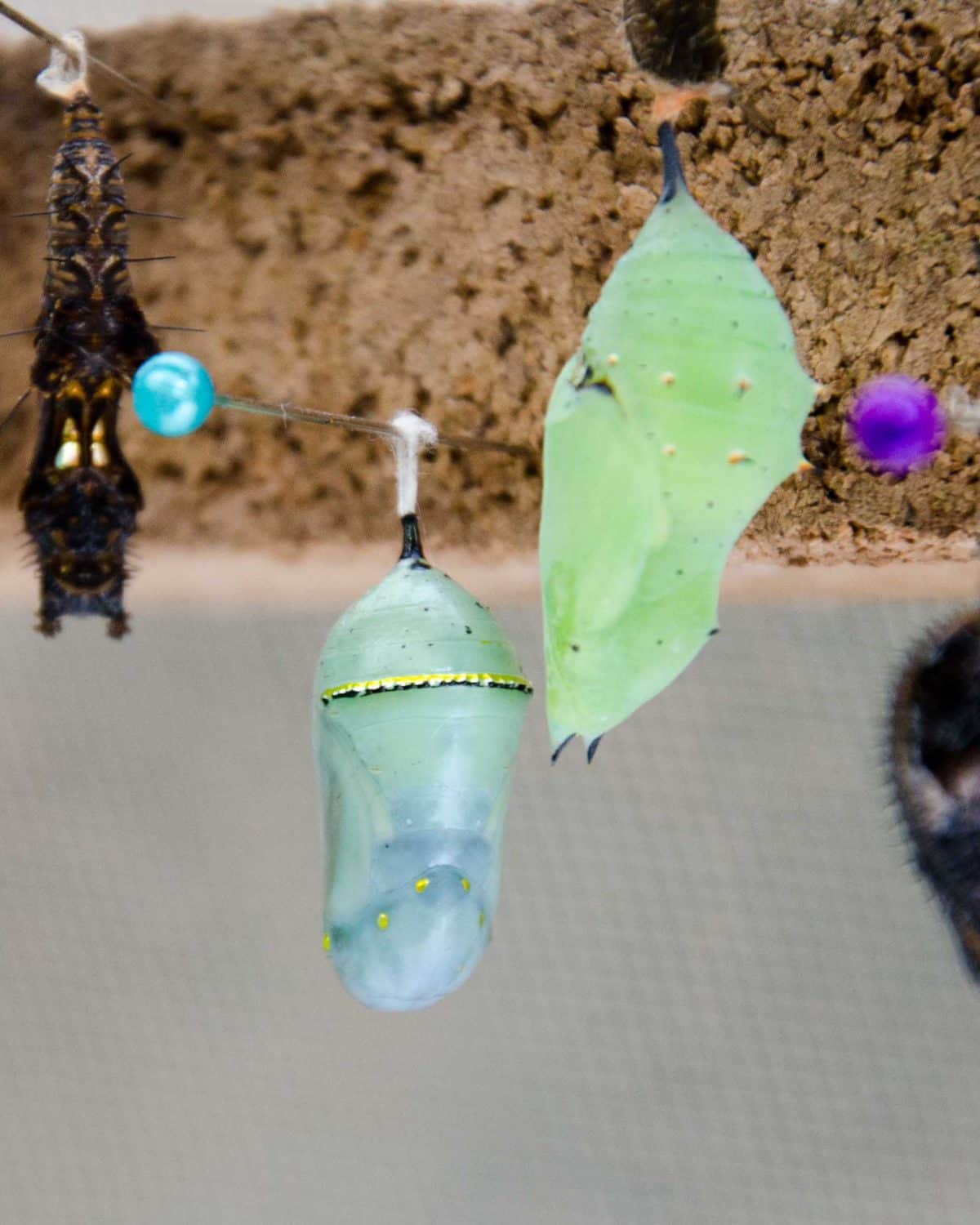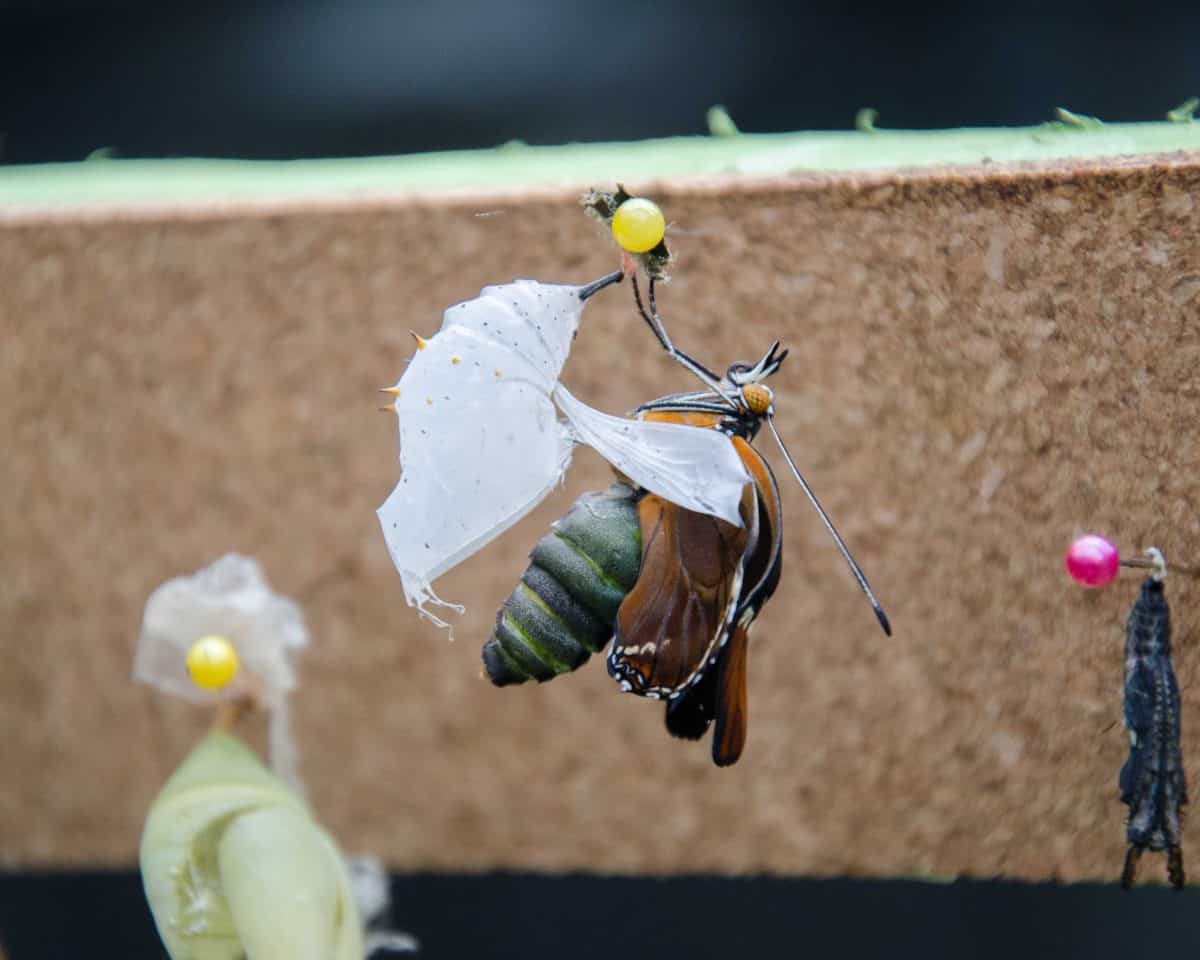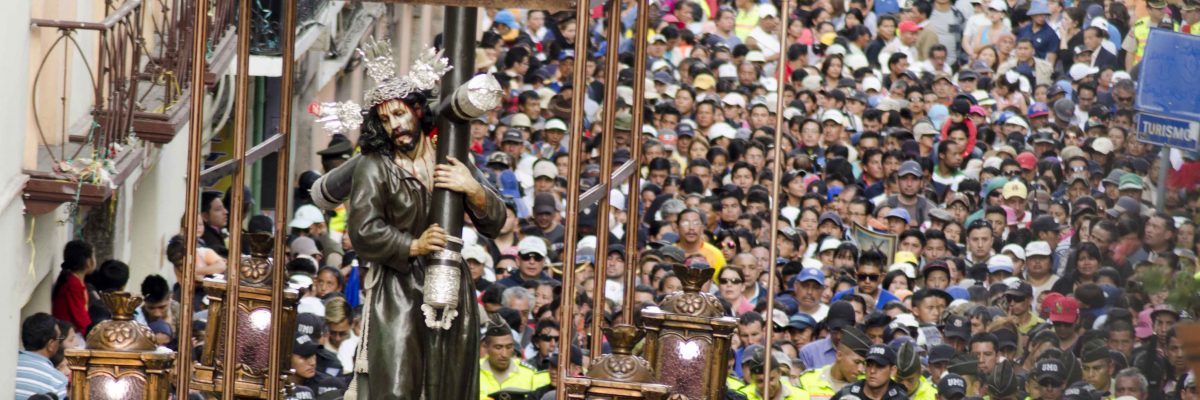As responsible travelers evolve, so do the stories we share.
This article is part of our living archive — trusted content we continue to care for.
First published on March 22, 2018 • Last updated on March 22, 2018.
What is a Mariposario?
While we have butterfly farms in the United States, they have mariposarios in Ecuador and other Spanish-speaking countries. The word mariposa means butterfly and the ending implies a zoo or place of a collection. For example, an orquideario is a place where they raise or protect orchids.
Generally, a mariposario not only displays butterflies but raises them in large numbers. This mariposario releases many butterflies into their carefully designed gardens. Flowering plants and shallow fruit feeders convince butterflies to hang around in the outdoor garden where hummingbirds sometimes join them at the feeders.
Hostería Mariposa de Mindo
This small oasis is free to guests of the Hostería Mariposa de Mindo. Entrance fees to the butterfly garden are included in your hotel stay. All others pay an entrance fee. What’s more, guests of the hotel can enter the butterfly garden at dusk when hundreds of Blue Morpho butterflies take to the air. This is the best time to admire their beautiful interior wing color, a glorious iridescent blue. During the day, when they tend to hang from small branches, these butterflies display owl-eye markings in darker browns on their plain brown wings.
The Blue Morphos are only one of 25 different varieties of butterflies raised at the mariposario. On any given day, it is possible to see hundreds of butterflies in the hot-house-like space. The owners claim that as many as 1,200 butterflies inhabit the mariposario at any time. We saw at least a dozen different species, many of them bright and colorful against the deep green foliage. We could easily have spent hours photographing each and every one.
Most butterflies have a life span of a few weeks. Generally, the smaller the butterfly, the shorter its life. But all butterflies begin life in the same way, hatched from eggs into a caterpillar. But you won’t find many caterpillars roaming around the garden. At the the butterfly farm, the process from caterpillar to butterfly is carefully watched and controlled.
The Chrysalises (not cocoons)
Fortunately, the best part of the process is on display. I loved watching new butterflies emerge from their chrysalises. Yes, I know that sounds strange. Those of us who grew up reading the Very Hungry Caterpillar want to say that they hatch from cocoons. But a caterpillar does not build a cocoon around itself. Rather, after shedding its skin several times, a caterpillar transforms into a pupa on the last molt. This pupa slowly hardens and becomes a chrysalis.
If you look carefully at the pictures of the different chrysalises, you will observe small details like little gold dots ringing a green pendant or a series of black dots along a ridged tip. These are tiny details that will emerge as patterns on the fully developed butterfly.
Part of what I liked best about this butterfly farm is that we could observe the hatching. Hundreds of cocoons suspend from pins pushed into a small strip of cork. On any day, different butterflies will be in a different stage of hatching. The process can take many hours. On your visit, I hope that you are lucky enough to watch a butterfly spread its wings for the very first time.
Mariposario, Mindo
Information For Your Trip
The road to Mindo is paved and will not turn into gravel until your last couple of miles. No special car necessary.
- Direction by Car, use WAZE and look for Mariposario Mindo, Ecuador
- Direction by Public Transportation There are daily buses from Quito to Mindo. Keep in mind that this is not a practical day trip by bus.

